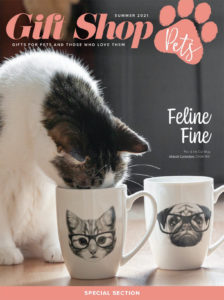Toy Association urges gift-givers to shop safely online
The upcoming holidays should be a time to relax after a long year, but the Toy Association urged parents to be vigilant about ensuring counterfeit and imitation toys – which have the potential to be unsafe – do not end up under the tree.
A shocking 83% of parents say their kids receive toys from grandparents and other gift-givers which they suspect are not purchased from verified sellers, including 48% who say it happens “frequently,” according to a survey of 1,000 U.S. parents conducted by Wakefield Research for The Toy Association.
What’s more, 2 in 5 parents (45%) say they would keep a toy even if they suspected it was counterfeit and potentially unsafe – more than double the 19% who said the same in 2019. This is troubling since these toys may not have been tested for safety. In contrast, legitimate toys sold by verified sellers and known brands are tested for compliance with more than 100 strict U.S. safety standards.
“Products sold at retail by legitimate U.S. toy companies, whether in brick-and-mortar stores or online, are rigorously tested for compliance as part of our nation’s world-class safety system,” said Steve Pasierb, president and CEO of The Toy Association. “Yet consumers must be vigilant as illicit sellers of counterfeit and dangerous imitation products have infiltrated online marketplaces, deceiving shoppers and gift-givers while posing a serious safety threat to children. The Toy Association works year-round with government agencies and leading e-commerce platforms to combat this menace and to educate shoppers on how to avoid unintentionally bringing unsafe fakes into the home.”
Nearly a fifth of parents (19%t) say their child has already received a counterfeit or knock-off toy purchased online, and the likelihood of a child receiving a counterfeit toy may increase with the age of the gift-giver: among those whose children receive gifts from grandparents and/or great aunts and uncles who shop online, a concerning 71% of parents have doubts that those gift-givers know how to ensure the toys they purchase online are coming from verified sellers.
Top Tips
With parents planning to do 58% of their holiday toy shopping online this year, it’s critical that they follow The Toy Association’s top tips for avoiding counterfeits. Parents are urged to share this advice with family members and other gift-givers – and to visit www.PlaySafe.org for more safety advice.
TIP #1 – AVOID SHADY SELLERS
Dig deep into a lesser-known seller’s online presence and reviews to be sure the toy under consideration is authentic – and therefore, safe. Can’t find a website for the manufacturer or seller? That’s one red flag.
Multiple grammatical errors in a product description or poorly photoshopped pictures are also red flags. A great alternative is to visit the toy brand’s website and either purchase directly from the site or follow links to an official retailer to purchase.
And remember: if a deal seems too good to be true, the product might be a counterfeit or imitation. A fake toy or cheaper alternative might be unsafe; it’s just not worth the risk.
TIP #2 – AGE MATTERS
Following the age label on toy packaging can save a child from serious injury. For example, toys labeled 3+ might contain small parts that are a choking hazard for children under three (or those who still mouth toys). More than a quarter (26%) of parents surveyed said their child has a received a toy intended for older children, proving that gift-givers need to be better educated on the importance of heeding age labels.
TIP #3 – AVOID DANGEROUS NON-TOY GIFTS
A surprising 15% of parents surveyed said their child has received a gift that was not a toy. Yet items like office supplies, desk puzzles, home decorations, watches, and remote controls that are not meant for children may contain small batteries and/or high-powered magnets that can be accessed by children and very dangerous if accidentally swallowed. Your best bet is to stick with purchasing toys intended for children, since there are strict federal standards in place to make sure those products are safe.
Ahead of playtime, parents should always read the instructions for assembly and use. For children that are too young to read, demonstrating how to play with a toy is the best way to make sure they understand how to safely enjoy it. Best of all, playing together as a family is lots of fun and even has enhanced developmental benefits for children.
The Toy Association and its members take toy safety extremely seriously and are committed year-round to educating parents and caregivers about safe play. Following this simple safety advice can go a long way toward preventing unnecessary accidents and injuries.
For more toy safety tips and information, visit www.PlaySafe.org, The Toy Association’s trusted resource for parents and caregivers.













 News
News










